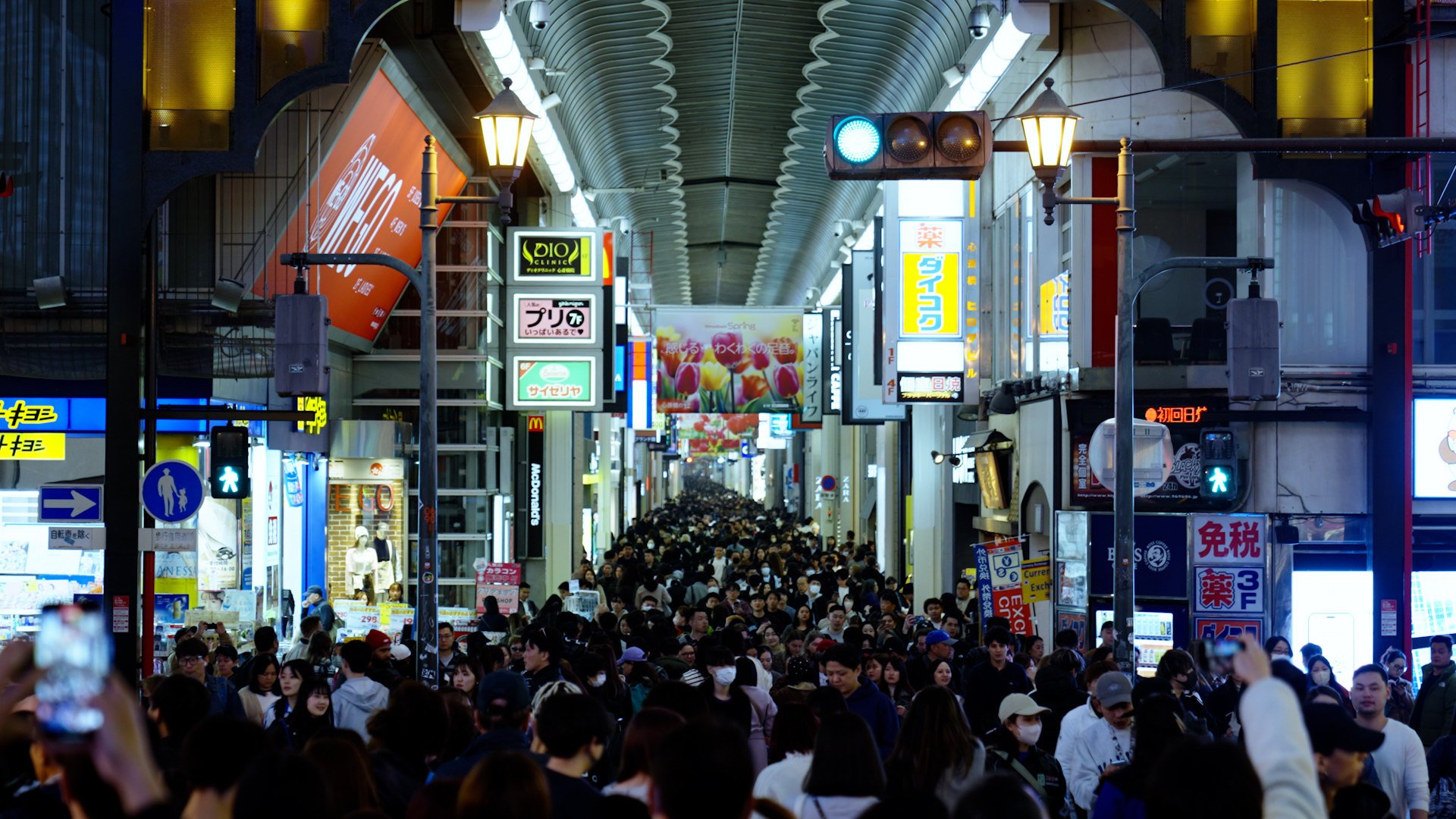Technology
Japan eyes boost from digital nomads despite overtourism crisis
Until recently, Lin Lo commuted daily to her nine-to-five office job in Melbourne, Australia. Any big travel plans often consisted of visiting her home in Taiwan every two to three years.
The digital marketer’s company, however, has now ditched its office in favour of a co-working space.
“Once they said we were allowed to work remotely, the first thing I thought was, ‘Where could I go?’” Lo said. “Outside Melbourne, outside Australia.”
She decided on a two-week “workcation” in Tokyo, Japan, allowing herself a slower pace of travel compared to her typical hectic schedule as a tourist.
“I get to do sneaky lunch breaks that allow me to explore the city a bit more, try different restaurants, do a little shopping,” she said.
Since the Covid-19 pandemic, remote work has grown exponentially. The World Economic Forum predicts a roughly 25 per cent surge in the number of remote jobs to 92 million by 2030.
According to Lo, “workcationers” – people who work while on holiday – tend to spend more time in a foreign city than traditional tourists thanks to work obligations, and they have different travel priorities.
“If I were a traditional tourist, I’d be going out to those landmarks, going up Tokyo Tower,” she said. “But if I’m working here, I’d find practical information like good coffee, good happy hour bars. So you feel like you’re living like a local for a little bit.”
Lo said she could next see herself spending up to a month at a time working somewhere new. Others – digital nomads – have already made “workcations” a lifestyle, and hotels around the world have increasingly adapted to the trend by catering to their needs.
In a co-working space at the heart of Tokyo, Swedish programmer Linus Swahn plugs away at his computer. Swahn has been working remotely for years, but exclusively in the form of workcations in Japan, having gained basic proficiency in Japanese over multiple trips.
“I can’t work from the hotel [room]. You become too isolated and go crazy,” he said. “So, I started researching co-working spaces.”
In doing so, Swahn found Andwork, part of the lounge space of a capsule hotel known as The Millennials Shibuya. With the rise of remote work blurring the line between work and play, co-working spaces attached to hotels are tailored to optimise both aspects through artsy space design and by fostering communities of creatives.
“That’s how we operate – the concept of ‘work between life’, and actually moving between work and private life to provide an environment where you can work more creatively,” Andwork’s assistant manager Kota Okuyama said.
Okuyama added that typical co-working spaces look like Japanese offices. They lack colour and are mostly used by locals.
“This is a space where all kinds of people gather,” he said of Andwork. “There are hotel guests, local freelancers and nomadic workers from overseas, creating a space where new inspiration can emerge.”
Swahn said he was able to draw from the hotel’s ethos.
“I just like hanging around other people working, even if they’re not like your real colleagues,” he said. “It gives you your social energy.”
View this post on Instagram
A post shared by .andwork | ホテルハイブリッド型コワーキングスペース (@_andwork_)
Across Japan, local governments have stepped up efforts to attract more digital nomads.
That is despite the fact that several of its major cities have been plagued with overtourism since the pandemic. Earlier in 2025, the national government even proposed an increased tourist tax to fund counter-initiatives.
“More local governments want digital nomads because they can stay longer than normal tourists,” said Ryo Osera, an executive member of the Japan Digital Nomad Association (JDNA). “They can also spend lots of money because they [tend to] have high-skilled, professional careers.”
The JDNA was established in 2022 to make Japan more welcoming for digital nomads. One way is by improving the existing digital nomad visa, which currently grants a stay of up to six months.
“Many other countries have better visas, which offer digital nomads one or two years’ stay,” Osera said. “So we are sharing cases with the government to make it longer.”
The JDNA is also building a digital nomad community across Japan. Osera is also the co-founder of Colive Fukuoka, a networking retreat for digital nomads and entrepreneurs on Japan’s southernmost main island, Kyushu. He said one incentive drawing digital nomads to the less touristy parts of Japan is cost.
“Accommodation is really expensive, thanks to the massive number of tourists,” Osera said. “If you are really into Tokyo or Osaka, you’re going to have some difficulties staying in Japan [in the long term].”
Osera became a digital nomad nine years ago. He said that while “baby nomads” tend to want to go everywhere, the constant moving eventually gets tiring. He said their focus eventually shifts to finding a place to settle.
“Everybody has a kind of destiny to find the best location where they’re meant to be,” Osera said. “So digital nomadism, this kind of life design, is to find the best location to make yourself most comfortable.”
Swedish entrepreneur Willy Ericsson has fully embraced the nomadic lifestyle, having spent years living in Spain, Dubai and the US, and is now exploring East Asia.
“I don’t plan my trips at all,” he said. “I usually book flights the same day, pack my things and go to the next city. So it’s quite cool having that complete freedom of location.”
Ericsson, who makes neon signs for companies, heard Tokyo was a capital of neon lights. While he came to meet local manufacturers, he also wanted a real taste of the city.
“I want to experience everyday life,” he said. “I’m not in a rush to see everything. I just want to take it day by day, kind of feel the people, talk with some locals.”
A guest at The Millennials Shibuya, Ericsson can be found working on the Andwork floor during the day. At night, he lets himself enjoy the city’s vibrant nightlife with the hotel’s other guests.
Comparing Tokyo to his hometown, Ericsson said the two were worlds apart.
“I come from a small town in Sweden where the winters are very dark, a lot of snow and very cold. It can become very isolated,” he said. “I’ve lived there the majority of my life, and it’s great to go home and meet old friends. But I do feel limited by what it has to offer.”
Asked if he had any plans of going back home to Sweden, the reply was prompt.
“I don’t have a return date,” he said. “I’m going to go across the whole globe on an around-the-world trip. My next destination is going to be LA. And then I’m going to Mexico, perhaps, and then Spain again. And maybe after that, I’ll go to Sweden.”
Until recently, Lin Lo commuted daily to her nine-to-five office job in Melbourne, Australia. Any big travel plans often consisted of visiting her home in Taiwan every two to three years.
The digital marketer’s company, however, has now ditched its office in favour of a co-working space.
“Once they said we were allowed to work remotely, the first thing I thought was, ‘Where could I go?’” Lo said. “Outside Melbourne, outside Australia.”
She decided on a two-week “workcation” in Tokyo, Japan, allowing herself a slower pace of travel compared to her typical hectic schedule as a tourist.
“I get to do sneaky lunch breaks that allow me to explore the city a bit more, try different restaurants, do a little shopping,” she said.
Since the Covid-19 pandemic, remote work has grown exponentially. The World Economic Forum predicts a roughly 25 per cent surge in the number of remote jobs to 92 million by 2030.
According to Lo, “workcationers” – people who work while on holiday – tend to spend more time in a foreign city than traditional tourists thanks to work obligations, and they have different travel priorities.
“If I were a traditional tourist, I’d be going out to those landmarks, going up Tokyo Tower,” she said. “But if I’m working here, I’d find practical information like good coffee, good happy hour bars. So you feel like you’re living like a local for a little bit.”
Lo said she could next see herself spending up to a month at a time working somewhere new. Others – digital nomads – have already made “workcations” a lifestyle, and hotels around the world have increasingly adapted to the trend by catering to their needs.
In a co-working space at the heart of Tokyo, Swedish programmer Linus Swahn plugs away at his computer. Swahn has been working remotely for years, but exclusively in the form of workcations in Japan, having gained basic proficiency in Japanese over multiple trips.
“I can’t work from the hotel [room]. You become too isolated and go crazy,” he said. “So, I started researching co-working spaces.”
In doing so, Swahn found Andwork, part of the lounge space of a capsule hotel known as The Millennials Shibuya. With the rise of remote work blurring the line between work and play, co-working spaces attached to hotels are tailored to optimise both aspects through artsy space design and by fostering communities of creatives.
“That’s how we operate – the concept of ‘work between life’, and actually moving between work and private life to provide an environment where you can work more creatively,” Andwork’s assistant manager Kota Okuyama said.
Okuyama added that typical co-working spaces look like Japanese offices. They lack colour and are mostly used by locals.
“This is a space where all kinds of people gather,” he said of Andwork. “There are hotel guests, local freelancers and nomadic workers from overseas, creating a space where new inspiration can emerge.”
Swahn said he was able to draw from the hotel’s ethos.
“I just like hanging around other people working, even if they’re not like your real colleagues,” he said. “It gives you your social energy.”
View this post on Instagram
A post shared by .andwork | ホテルハイブリッド型コワーキングスペース (@_andwork_)
Across Japan, local governments have stepped up efforts to attract more digital nomads.
That is despite the fact that several of its major cities have been plagued with overtourism since the pandemic. Earlier in 2025, the national government even proposed an increased tourist tax to fund counter-initiatives.
“More local governments want digital nomads because they can stay longer than normal tourists,” said Ryo Osera, an executive member of the Japan Digital Nomad Association (JDNA). “They can also spend lots of money because they [tend to] have high-skilled, professional careers.”
The JDNA was established in 2022 to make Japan more welcoming for digital nomads. One way is by improving the existing digital nomad visa, which currently grants a stay of up to six months.
“Many other countries have better visas, which offer digital nomads one or two years’ stay,” Osera said. “So we are sharing cases with the government to make it longer.”
The JDNA is also building a digital nomad community across Japan. Osera is also the co-founder of Colive Fukuoka, a networking retreat for digital nomads and entrepreneurs on Japan’s southernmost main island, Kyushu. He said one incentive drawing digital nomads to the less touristy parts of Japan is cost.
“Accommodation is really expensive, thanks to the massive number of tourists,” Osera said. “If you are really into Tokyo or Osaka, you’re going to have some difficulties staying in Japan [in the long term].”
Osera became a digital nomad nine years ago. He said that while “baby nomads” tend to want to go everywhere, the constant moving eventually gets tiring. He said their focus eventually shifts to finding a place to settle.
“Everybody has a kind of destiny to find the best location where they’re meant to be,” Osera said. “So digital nomadism, this kind of life design, is to find the best location to make yourself most comfortable.”
Swedish entrepreneur Willy Ericsson has fully embraced the nomadic lifestyle, having spent years living in Spain, Dubai and the US, and is now exploring East Asia.
“I don’t plan my trips at all,” he said. “I usually book flights the same day, pack my things and go to the next city. So it’s quite cool having that complete freedom of location.”
Ericsson, who makes neon signs for companies, heard Tokyo was a capital of neon lights. While he came to meet local manufacturers, he also wanted a real taste of the city.
“I want to experience everyday life,” he said. “I’m not in a rush to see everything. I just want to take it day by day, kind of feel the people, talk with some locals.”
A guest at The Millennials Shibuya, Ericsson can be found working on the Andwork floor during the day. At night, he lets himself enjoy the city’s vibrant nightlife with the hotel’s other guests.
Comparing Tokyo to his hometown, Ericsson said the two were worlds apart.
“I come from a small town in Sweden where the winters are very dark, a lot of snow and very cold. It can become very isolated,” he said. “I’ve lived there the majority of my life, and it’s great to go home and meet old friends. But I do feel limited by what it has to offer.”
Asked if he had any plans of going back home to Sweden, the reply was prompt.
“I don’t have a return date,” he said. “I’m going to go across the whole globe on an around-the-world trip. My next destination is going to be LA. And then I’m going to Mexico, perhaps, and then Spain again. And maybe after that, I’ll go to Sweden.”




